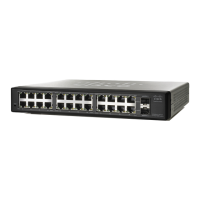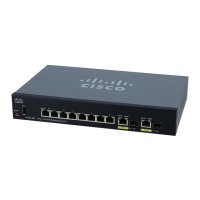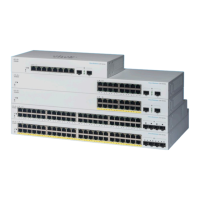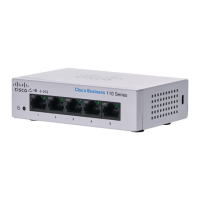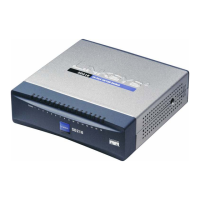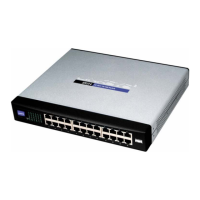Port Management
Loopback Detection
Cisco Small Business 200 Series Smart Switch Administration Guide 117
10
• Automatic Recovery Interval—Specify the time delay for automatic error recovery, if enabled, after
a port is shutdown
Automatic ErrDisable Recovery
• Port Security—Select to enable automatic error recovery when the port has been shut down for port
security violations
• 802.1x Single Host Violation—Select to enable automatic error recovery when the port has been
shut down by 802.1x.
• STP Loopback Guard— Enable automatic recovery when the port has been shut down by STP
Loopback Guard.
• Loopback Detection—Select to enable error recovery mechanism for ports shut down by loopback
detection.
STEP 3 Click Apply to update the global setting.
To manually reactivate a port:
STEP 1 Click Port Management > Error Recovery Settings.
The list of inactivated interfaces along with their Suspension Reason is displayed.
STEP 2 Select the interface to be reactivated.
STEP 3 Click Reactivate.
Loopback Detection
Loopback Detection (LBD) provides protection against loops by transmitting loop protocol packets out of
ports on which loop protection has been enabled. When the switch sends out a loop protocol packet, and
then receives the same packet, it shuts down the port that received the the packet.
Loopback Detection operates independently of STP. After a loop is discovered, the port that received the
loops is placed in the Shut Down state. A trap is sent and the event is logged. Network managers can define
a Detection Interval that sets the time interval between LBD packets.
The following loop cases can be detected by the Loopback Detection protocol:
• Shorted wire—Port that loop backs all receiving traffic.
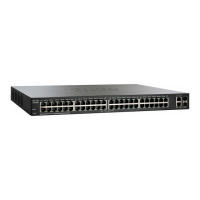
